





Hemophilic stick
Main data on a disease
 Surprisingly, but if abroad the hemophilic stick is subject to compulsory vaccination, then in our country everything is differently. Many parents do not know at all about what is a hemophilic stick and, therefore, do not undertake any measures for the prevention of an infection. However, the neutral position of doctors is on this matter quite clear, vaccination has to be performed at the expense of the state, but fight against a hemophilic stick is not provided by a national calendar of inoculations and any funds for it is not allocated.
Surprisingly, but if abroad the hemophilic stick is subject to compulsory vaccination, then in our country everything is differently. Many parents do not know at all about what is a hemophilic stick and, therefore, do not undertake any measures for the prevention of an infection. However, the neutral position of doctors is on this matter quite clear, vaccination has to be performed at the expense of the state, but fight against a hemophilic stick is not provided by a national calendar of inoculations and any funds for it is not allocated.
Frankly speaking, such situation slightly frightens. Activators of a hemophilic stick live in upper respiratory tracts of any person. As a rule, they do not constitute danger to healthy people, but at the weakened immunity the hemophilic stick begins to breed strenuously and provokes emergence of whole "bouquet" of sores, including: meningitis, pneumonia, epiglottiditis and purulent cellulitis. People, the transferred serious illness, and children under 5 years at whom the organism cannot develop own antibodies against an infection yet enter into risk group. The peak of incidence falls on 6-12 months when protective systems of an organism of the child cease to be supported by milk of mother and begin to work independently.
Today to 40% of children are carriers of a hemophilic stick, and at any time it can pass into an active phase and begin the destructive work. Fears are caused also by the fact that the infection is easily transmitted in the airborne way, or through direct contact with things of the sick person.
Why vaccination of the population is not carried out?
To answer this question, it is necessary to have an idea of some features of a hemophilic stick. Doctors know 6 types of activators of a hemophilic stick, but only one of them, namely – type B, pose a threat for children and adults. It would seem, the task becomes simpler, but it only a delusion. All the matter is that a hemophilic stick which treatment seems a trick, extremely a rezistentna to antibiotics. From all the party it is surrounded with a peculiar capsule. This protective cover successfully constrains the main components of drugs and, besides, complicates development of antibodies. As a result, the percent of stability of a hemophilic stick to penicillin, levomycetinum, tetracycline and other antibiotics makes from 80 to 100%.
Treatment of a hemophilic stick is strongly complicated also because of imperfection of domestic diagnostic technologies. Sets which can find a hemophilic stick are made only abroad and cost rather much. It is one of the main causes of failure from general vaccination against a hemophilic stick.
Why vaccination after all is necessary?
We already mentioned above that the hemophilic stick promotes emergence of a set of other diseases. Scientific research showed that after vaccination many children in general ceased to be ill ORZ or no more than 1-2 times a year hurt. Besides, there are two more good reasons to fight against effects which are caused by a hemophilic stick. Inoculations help:
- to reduce to zero probability "to catch" meningitis or pneumonia in the first years of life of the child;
- to prepare the child for constant communication with peers that is inevitable at visit of kindergarten and school. During this period the frequency of the infections transferred the kid increases. Vaccination reduces risk of infection and development of heavy complications.
Hemophilic stick – treatment and prevention of a disease
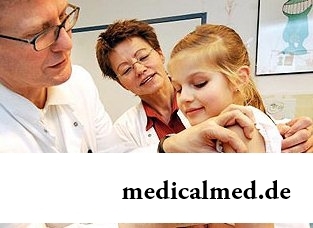 As mass vaccination in our country is not carried out – it is necessary to count only on itself, the benefit new means of fight against a hemophilic stick appeared in recent years. One of them – the conjugated vaccines with protein which quite successfully cope with an infection. In Russia the French drug Akt-HIB from the company Avensti Pasteur was widely adopted.
As mass vaccination in our country is not carried out – it is necessary to count only on itself, the benefit new means of fight against a hemophilic stick appeared in recent years. One of them – the conjugated vaccines with protein which quite successfully cope with an infection. In Russia the French drug Akt-HIB from the company Avensti Pasteur was widely adopted.
The vaccine is shown to children from 2 months. It contains tetanic anatoxin which promotes strengthening of an immune response. If the child had a hemophilic stick, inoculations of Akt-Hib will reduce risk of development of an infection and secondary diseases.
Use of a vaccine for children of different age groups:
- up to 6 months – 3 injections with an interval of 2 months. In a year after the 3rd injection the revaktsiniruyushchy dose is entered;
- from 6 to 12 months – 2 injections with a break in 1 month. The Revaktsiniruyushchy dose – in 18 months;
- from 1 year to 5 years - 1 injection.
Short side effects are possible: erubescence in the place of a prick, irritability, drowsiness.
Drug for cough Terpinkod is one of leaders of sales, not because of the medicinal properties at all.

Season of activity of viral infections in the heat. Everyone can get sick, but probability of this unpleasant event it is possible and it is necessary miny...
Section: Articles about health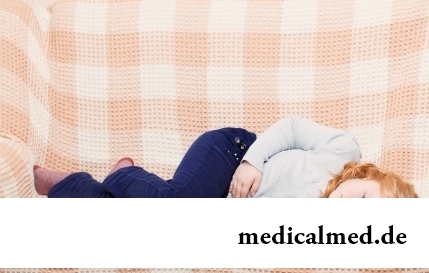
Epilepsy is one of widespread neurologic diseases. Parents, whose children suffer from this illness, should face rumors and delusions, many of which remained since the Middle Ages....
Section: Articles about health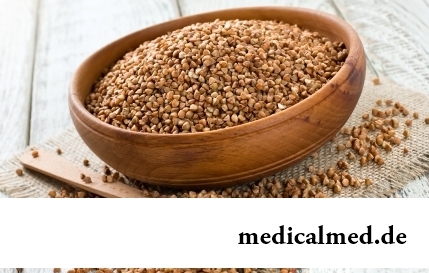
History of cultivation of a buckwheat contains more than five thousand years. Grain which is received from this plant is used for preparation of porridges, soups, baked puddings and puddings, do flour which is one of the main ingredients of the noodles popular in many countries of it. Buckwheat dishes are useful and tasty, they are perfectly combined with meat, milk, eggs, mushrooms, fruit and vegetables....
Section: Articles about health
The unpleasant feelings connected with spring breakdown are familiar almost to each of us. Often happens that in March-April on the person...
Section: Articles about health
The stroke is one of the most widespread diseases of the person, annually in the world about 6 million cases of this pathology are registered. According to medical statistics, strokes occur almost three times more often than myocardial infarctions. Disease otno...
Section: Articles about health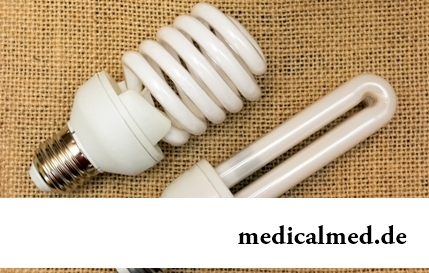
Energy saving lamps are one of the most popular products of innovative technologies, and there is no wonder: they much more economic also are more long-lasting than usual filament lamps. At the same time there are fears that energy saving bulbs can become the reason of emergence of problems with health. Unfortunately, some of similar opinions have the real reasons....
Section: Articles about health
The medicine promptly develops, and the fact that else quite recently it seemed by miracle can now. We are not surprised any more to the fact that sport...
Section: Articles about health
There comes the season of issues. Many Russians already dream of outdoor recreation, trips, beautiful seaside beaches. At this time there is no wish to think of problems with health and other unpleasant things, however there are subjects which require attention. Summer...
Section: Articles about health
About 10-15 years ago existence of the computer in the apartment of the Russian was considered as a rarity and office rooms were only at the first stage of equipment by these useful devices. Today practically in each house there is a computer (and often not one), and a regular user is already every our second compatriot. Convenience and efficiency of personal computers are undoubted, but the people working with them daily have to know also about health hazard which they can predstavlit...
Section: Articles about health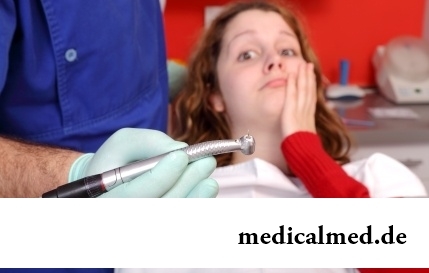
Statistically, can only one of ten of our compatriots brag of a decent condition of an oral cavity. On среднестатистич...
Section: Articles about health
Such trouble as the milkwoman's attack, at least once in life happened almost to each woman. Prevalence of a disease is explained by the fact that the causative agent of an illness belongs to the so-called opportunistic microflora living on mucous an obol...
Section: Articles about health
At this plant there are a lot of names: tuberiferous sunflower, Jerusalem artichoke, solar root, earth pear. Contrary to popular belief, it is not an exotic plant at all. The wild girasol grows in a midland of Russia practically everywhere: at the edges of roads, to slopes of ravines, on heathlands. Also several cultural versions different from wild plants are removed by larger and juicy root crops....
Section: Articles about health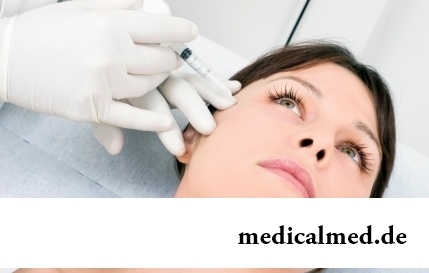
Eyes – one of the most vulnerable areas on a face therefore age changes concern them first of all. Whether it is possible to keep a pier...
Section: Articles about health
What is in our understanding weeds? It plants which are considered to be suitable only for compost pits and feeding of animals. Meanwhile, among the weeds growing literally under legs it is possible to find the mass of the officinal herbs possessing invaluable Paul...
Section: Articles about health
The advantage of swimming for the person is so high that this sport is not only the most popular, but also is widely applied in medicine and rehabilitation processes. If you look for for yourself the occupation allowing pleasantly and to spend time, then swimming with advantage – the fact that it is necessary for you. And give learns several facts about swimming....
Section: Slideshow
Venereal diseases in medicine are called the infections which are transmitted preferential sexually, now they are so...
Section: Articles about health
The pine is one of the most widespread plants of our woods. Its needles and pitch not without reason called by "gallipot" were since ancient times used for strengthening of protective forces of an organism, treatment of avitaminosis, anemia and many other diseases. In recent years wide п...
Section: Articles about health
Use of medicinal plants in therapy is urgent today, more than ever. The drugs made of curative herbs cannot replace completely modern synthetic drugs, but their use becomes frequent serious help in simplification of a course of many illnesses and improvement of quality of life of chronic patients....
Section: Articles about health
The majority of gynecologic diseases prove three main signs, each of which speaks about need to the visa...
Section: Articles about health
Obesity is called a disease of 21 centuries, for the last 100 years the number of the people suffering from excess body weight considerably increased. Statistically, on Earth already about 1,5 billion corpulent people, and 500 million from them have extreme degree of completeness, are negative...
Section: Articles about health
For anybody not a secret that our country is one of the most "drinking" in the world. At clear understanding that the use of hard alcoholic drinks – occupation extremely harmful, most of Russians belong to alcoholism with unjustified loyalty. Apparently, existence of a set of myths in which tendency to excessive libations looks nearly positively is explained by it. It is worth getting acquainted with the most widespread of similar delusions and to be convinced in them not...
Section: Articles about health
Aging — natural and inevitable process. Over time our skin loses elasticity, on it saggings, a face form теря are formed...
Section: Articles about health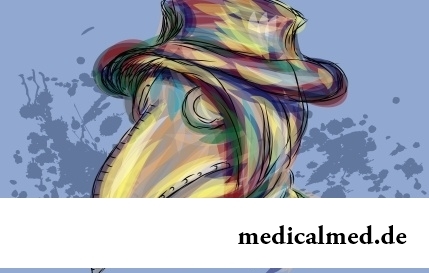
History of mankind contains several tens of epidemics whose emergence was compared by eyewitnesses and historians to doomsday. The most terrible of them claimed the lives of millions of people, having made even the whole people to the person of the earth. What they − the diseases striking terror? Daringly...
Section: Articles about health
Osteoporosis this general disease which main sign is decrease in density of a bone tissue. On distribution width it takes the fourth place among noninfectious diseases. The illness develops at mature age more often: in our country about a third of women and a quarter of men suffers from it 50 years are more senior....
Section: Articles about health
Diseases of joints often begin imperceptibly for the person. The first stages of destruction of the cartilaginous tissue providing soft and свободн...
Section: Articles about health
Many of us, probably, noticed more than once that from intellectual loadings at some point the brain as though "overheats" and "assimilation" of information is strongly slowed down. Especially this problem urgent for persons of age becomes more senior than fifty years. "It is already bad with...
Section: Articles about health
Each person supports all life a SARS about 200 times. The peak of incidence falls on cold season, but it is possible to get sick with a temperature and a pharyngalgia, and sometimes and very possibly, even during a heat. The reasons for development of catarrhal diseases there is a set: from the weakened immunity till an excess portion of ice cream....
Section: Articles about health
